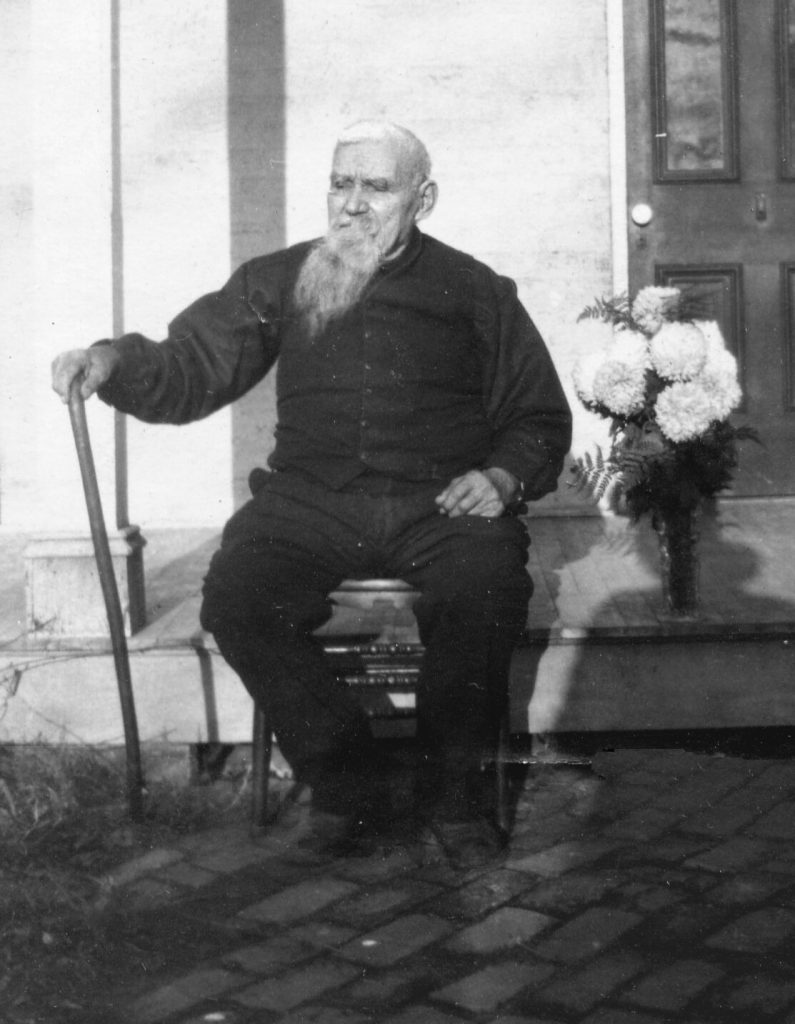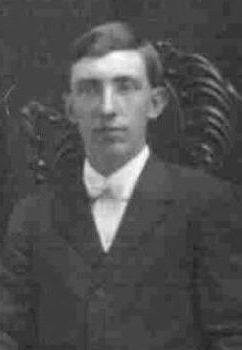
Y-DNA lineage born
between 1833 and
2018. Riehle surname
continuity has been
confirmed for this
lineage back to
c.1600 using Y-DNA
testing & analysis.
We are attempting to get a better sense for the commonality and diversity of the various Riehle lineages through an assessment of Y-DNA from these lineages.
While autosomal DNA (atDNA) dilutes over a limited number of generations, Y-DNA and mt-DNA remain distinctive over hundreds of generations. Many of us attempt to track our mtDNA as well as Y-DNA back as far as we can, but since this site is focused on a specific surname and since surnames in our culture have generally been passed from father to son along with the Y chromosome, tracking Y-haplogroups among Family Segments has relevance to the focus of this website.
We all understand of course that not all Riehle Y-DNA will be the same. Surnames only came into common use in Germany in the later middle ages and came from many sources including place names, references to a parent’s given name, occupations, accomplishments, offices held, physical appearance, etc. Moreover in Germany surnames only became firmly and legally hereditary in the 19th century, so prior to that time a man might assume a surname similar to others in use if it seemed a good fit, or those around him might reference him with a descriptive name, assigning it to his children in subsequent church records.

Although we do not know the source of our surname, it may have been borrowed from the Old French “riuler“, from Latin regulāre, “to regulate or rule”. Its use in Baden (along the Rhine, adjacent to France) might support this. Another source speculates a similar association. Regardless, this works as an example of how names might have been assumed back in the day as various local leaders might have adopted the name from other such leaders in the region with no hereditary association. Of course surname lineages may also vary from genetic lineages due to adoptions, unmarried mothers abandoned by fathers, wives unfaithful to husbands, pronunciation drift, spelling differences (in church records for example) or other anomalies that can creep into a family line over hundreds of years.

Whatever the history of the name within a particular lineage, it has been carried forward as a representations of that lineage and remains with us today. As we attempt to identify Riehle haplogroups we can hope to learn more about the genetic history of each such lineages, going back to the time of the adoption of the name within that lineage, and then millennia beyond. Of course we also look for any haplogroup commonality we might find across and within our various Family Segments.


So we are attempting to tie the various results from Y-DNA testing to Riehle Immigrant Ancestors or other broad family identifiers and would like help from our readers to do this. More data will yield better insights, so please do not hold back just because there may already be results for your ancestral line. We have already identified centuries old commonality within lineages as well as anomalistic difference. More testing and confidential sharing of key information will help us learn more about the history of our surname.

For anyone who participates in this exercise, please be assured that nothing will go into this table without your review and approval. As you can see from the content below, participant names and recent ancestry are not disclosed.
Priority Riehle participants are highlighted in red…
| Y-Haplogroup | Information Including Immigrant Ancestor or Similar Family Ties |
| E-V13 aka E1b1b1a1b1a (With deep subclade detail available on request) | We have distant Riehle cousins (6th cousins, once removed) from the Wagshurst line showing closely matching, deep subclade results within the E-V13 haplogroup. A Riehle from the line of Clemens Riehle is matched to the line of Felix and Leonhard Riehle. The lineages have their MRCA (most recent common ancestor) in Mathias Riehle, born 1697 in Wagshurts, Baden. Various Autosomal DNA matches link other Riehle male family members back to these lineages, providing evidence of continuity for many Wagshurst descendants. Such descendants are in Ohio, New York, Indiana, Kentucky, Arizona, California, Wisconsin, Iowa, North Carolina, Massachusetts, Minnesota, Ontario and other parts of the US and Canada. No doubt many others can be found in the Baden region of Germany. In August, 2024 we received Y-DNA test results for a Riehle who had generously agreed to do Y-DNA testing with male lineage roots from an area approximately 17 km southwest of Offenburg, Baden. He shared identifying variants of the subclade discussed above but did not have one of the other variants shared by the Wagshurst lineage testers. As a result, a newly minted subclade has been established for his Wagshurst cousins. We estimate the MRCA of these three men (and other Riehle descendants who may have come from either town) was born about 1600, but available data allows this might have been as early as 1500, and perhaps even earlier (~16% likelihood). See also this link with more details about when and where this MRCA might have been born and how the lineages might be related. The close proximity of Nordrach to Offenburg increases our interest in finding more test subjects who descend from Bartholomew Riehle (see below) as well as other emigrants from Offenburg and other parts of Baden and Württemberg. |
| R–CTS1211 (R1a-M558) | This Y-DNA haplogroup has been identified in a man with the Riehle surname who traces his genealogical male ancestry to Benedict and Johannes Riehle. Johannes (b. Wagshurst in 1756) is confirmed as E-V13 via the lineages connecting the E-V13 testers discussed above. Accordingly, the results shown here suggest a Y-DNA discontinuity. Use the Comment section below to request more information and mark “confidential” as you may prefer. Notwithstanding this possible discontinuity, CTS1211 is now clearly well established as a Riehle Y-Haplogroup across a number of US states. |
| R1b-L21 subclade R-DF25 and a deeper subclade, R-S6168 | These Y-DNA results are from two genealogical descendant of Bartholomew Riehle (via sons Ferdinand Richard Riehle (1834–1897) and Andrew Riehle (1848–1914), both born in Chillicothe Ohio, with descendants in Ross County Ohio, Farming Minnesota, North Dakota and elsewhere. Available statistics indicate however that this haplogroup has over 96% ancestry from the British Isles and disproportionately from the Celtic areas. Additional Y-DNA testing is required, preferably from descendants of George (1822–1858) or Henry (Heinrich) Bartholemew Riehle (1846–1933), from which lines we do not yet have test result. Note: Irish and Scottish troops participated in the Thirty Years War, typically fighting alongside their respective religious allies. Offenburg was an important battleground in this war, occupied in turn by both sides. Though unsubstantiated, one hypothesis might be that such Celtic Y-DNA arrived during this time. More detailed Y-DNA analysis might suggest Bartholomew carried Y-DNA more prevalent among either the Irish or the Scots. |
| R1b1 – (99% + likely to be R-M269 | This is another, much older, much less precise reading of simply R1b1 from another Bartholomew Riehle genealogical descendant (via his son Ferdinand). This older, less specific reading is a parent-clade of R-L21, and so is not inconsistent with the above discussion, but R1B1 includes a much wider geographic base, essentially western Europe. |
| Possible atDNA link to E-V13 | There is autosomal DNA evidence (from one segment with very low cM) suggesting an all male connection between a Bartholomew Riehle descendant (via his son or Henry (Heinrich) Bartholemew Riehle (1846–1933)) and a man with E-V13 Y-DNA from the Wagshurst line. This connection requires stronger verification, preferably from descendants of Henry or George Riehle (1822–1858). |
| Haplogroup R-M198 aka R1a1a, so a subclade of R-M420 (R1a) | This haplogroup assessment comes from a descendant of Joseph Riehle Sr. who immigrated to Lafayette Indiana from Baden in 1854. Male siblings of Joseph also settled in Lafayette as well as in Kansas City, MO. An estimated 99.7% of documented test-subjects in this haplogroup are in subclade R-M417. This is an old haplogroup, likely reflecting migrations from Scandinavia, North-Central Europe, or Eastern Europe. It is not common in Baden, which is not to suggest the migration into that region was recent. More testing from this line is needed. |
| R1b1-S21, aka R-M405, aka R-U106, aka R1b1a1a2a1a1 | From a Riehle in Germany near Stuttgart (roots in Mähringen Württemberg). This haplogroup is held by about 19% of men in Germany. Still, we know there are other men with different surnames from the same region who are in the E-V13 Y-Haplogroup. We encourage other Württemberg Riehle’s or other Riehle descendants from various areas of Germany to participate. |
Riehle.Net is now also working with Family Tree DNA where we have established a Surname Project: “Riehle of Germanic Europe”. You can work with us through either site to explore our common and diverse Y-DNA connections.
So come on Riehle boys, help us out with this! Please reply below with your information or get tested with Family Tree DNA, 23andMe or another testing services that include haplogroup information. Please contact us (below) to discuss testing services or costs. All responses will be kept confidential unless and until you agree to allow related content to appear.
Mähringen / Rielin / Mähringen / Rielin / Mähringen / Rielin / Mähringen / Rielin / Mähringen / Rielin / Mähringen / Rielin / Mähringen / Rielin / Mähringen / Rielin / Mähringen / Rielin / Mähringen / Rielin / Mähringen /Rielin / Mähringen /Rielin / Mähringen /Rielin / Mähringen /
Sons of the Legion ?
Exploring the migration of an E-V13 subclade into Swabia
Riehle Y-DNA Research Project at Family Tree DNA

Register as a Riehle.Net User
If you would like to register with us, please leave a confidential comment below, ideally with some information on your Riehle family lineage or whatever you want us to know about you.
No span; terminate at any time.

If you would like to share this page with family on
social media, please click below and spread the word.
Hello,
on the Y-Haplogroup statement for R1a-CTS1211, I have to question this as myself (me being the R1a-CTS1211).
I now have documentation of matching DNA descentant ancestors prior to Adrian,.. (Adrian’s Grandparents Johannes and Helena’s child Hyacinthus(Benedictus’ sybling also a child ot Johannes Riehle and Helena Viox)…?? so not sure about “not a genetic descendant of Adrian” comment would be accurate?
From the information I have Benedictus only had one son “Adrian” that lived to adulthood??
Thank you.
Thanks for this note and for all your help since then to get this resolved. I have adjusted the entry for R–CTS1211 as we are in agreement that the Y-DNA discontinuity occurred prior to Adrian.
Interesting… I’m I-M253 and [theoretically] a descendant of Clemens via Francis Albert and Clarence Edward. Have you heard from any other I-M253 Riehles?
Thanks for contacting us. Although you are a descendant of Francis and Clemens, you are related to them through a maternal connection and therefore would not carry their Y-DNA. Y-DNA is only passed from father to son, with little or no variation.
Ah yes, good point. I’ll blame overtiredness for that one.